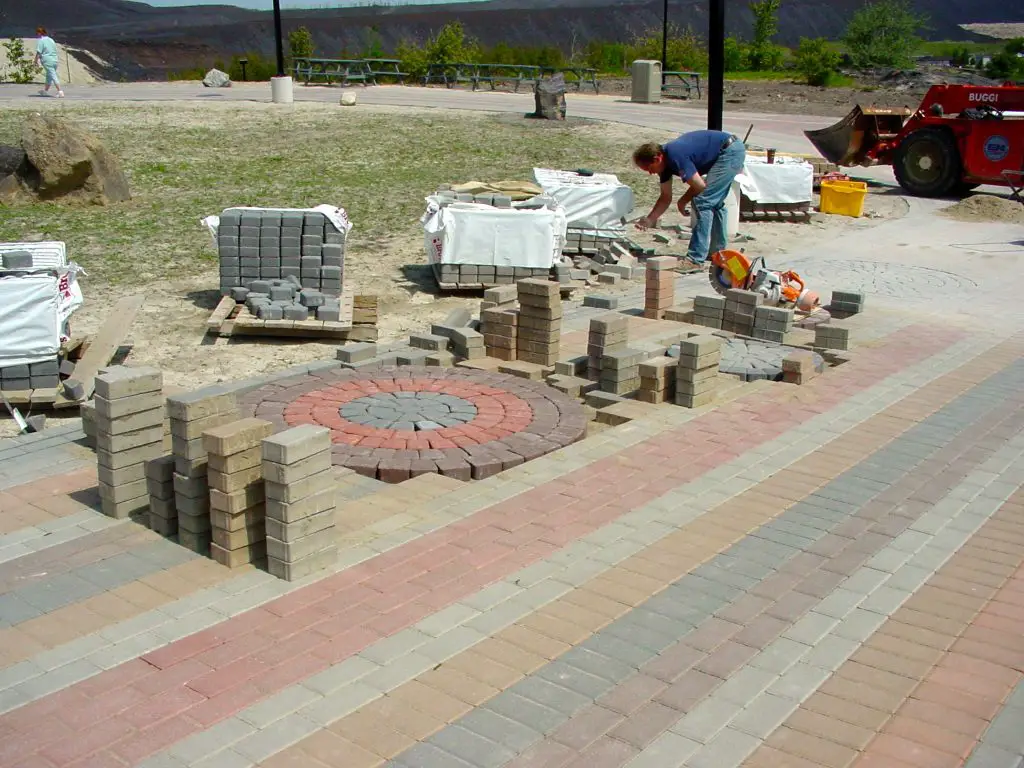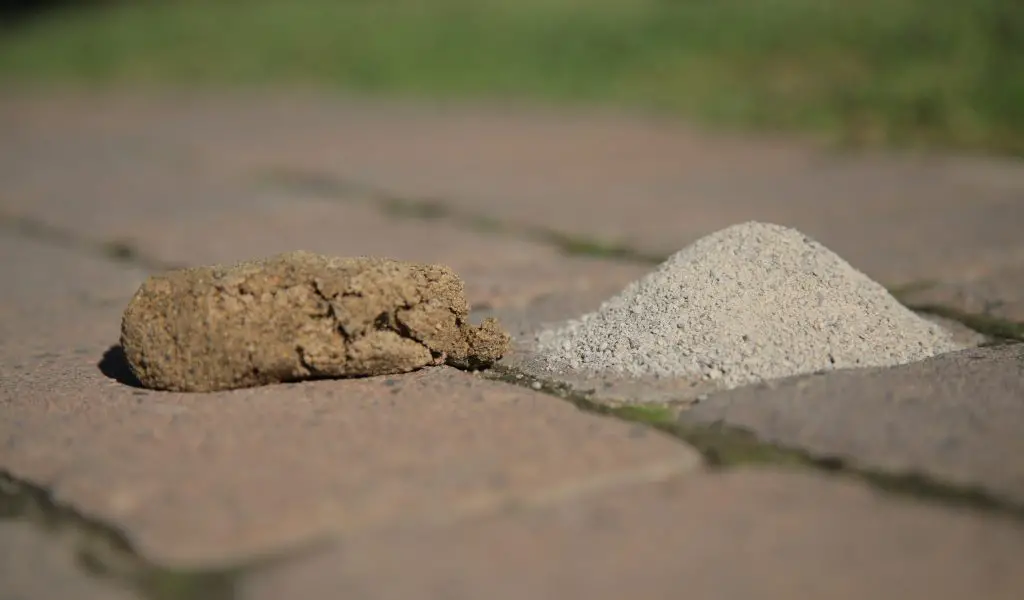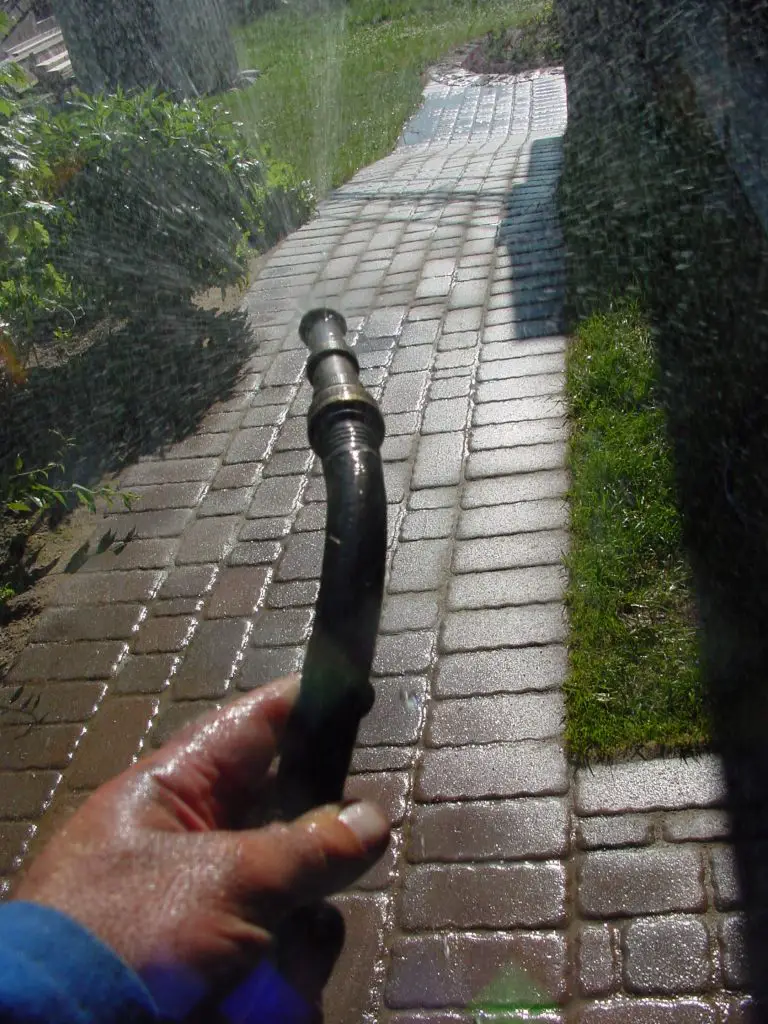Of all the options available for hard surface paving of driveways, walkways and patios, I like brick pavers the best. They look great, they survive the harsh freeze/thaw cycles of my wintery climate much better than any other masonry or asphalt option, and they’re well-suited to do-it-yourself installations. The only hitch with pavers is the space between bricks. Ordinary sand typically used to fill these gaps is prone to washing out, especially with the more interesting, round-edged and tumbled pavers. Loss of sand leaves unsightly gaps that invite weeds, ants and brick movement. All this is why I made a second and more or less successful attempt at solving the old paving brick sand problem in a way you’ve probably never heard of before.
- Reading Time = 4 1/2 minutes

The Paver Sand Problem
The first time I did something about the sand issue with paving bricks was in July 2004. That’s when I used a pressure washer to remove what was left of the ordinary sand I used between pavers when I originally installed a brick pathway at my house in 2001. I replaced that sand with a type of polymeric sand that was made especially for the job. It hardens in the presence of water, and the results were much better than before. Better, but not perfect.
It often takes time to properly assess home improvement products, and after seven years of watching polymeric sand I could see one weakness unfolding. Although the polymeric did harden well after first contact with water, the hardened sand didn’t have the ability to remold itself to the changing position of bricks as they inevitably move a little from autumn to winter and back to spring again. This lack of ability to re-soften in the presence of moisture, then remold to a new shape, is the reason why polymeric sand disappeared slowly from my installation in chunks. It’s also why I sat up and took notice when an alternative product came along.
Paver Sand That Re-Softens
Mike Reihm is a graduate of the University of Guelph, Canada, and he’s noticed the same problems with paver sand that I did. Ordinary sand washes out too easily, and any of the alternatives he’d seen can’t re-form themselves as freeze/thaw cycles make pavers shift. That’s why Mike harnessed his knowledge of chemistry to create an alternative that he calls Envirosand (866-636-8476). What I’ve seen convinces me the long-term performance is better than what I’m used to with anything else. The ability to re-soften in the presence of water and re-harden again into a new shape is the reason why.

If you take a small pile of Envirosand and wet it, the dry granules turn into a dough-like mixture that holds together without being sticky. This is what happens as the product is activated with mist from a garden hose after it’s worked into cracks between pavers. Let this mixture dry and it hardens enough to stay put firmly. Moisture from regular rains are enough to reactivate Envirosand and make it flexible again, though during my tests it still held together and resisted washing out, even while soft. This is a powerful combination of qualities, and I know from experience that it can make all the difference.
Installing Sand Correctly
As far as installation goes, Envirosand flows very well out of the bag and is easier than regular sand to work into gaps between pavers. Make sure your installation is bone-dry before applying the sand, with no chance of rain for the day. Sweep it into cracks, work it down as far as it will go with a gas-powered compactor, then sweep the surface completely clean. The compactor introduces vibration to each paving brick, jiggling Envirosand down into the cracks completely. When the only remaining sand is in the gaps, gently water the surface to activate it. For flagstone installations with larger gaps between 10mm and 25mm, EnviroStone is a companion product made with bits of crushed stone in the mix for added strength over wider spaces.

While it’s tempting to think that optimizing your home is all about big ticket items, that’s not entirely true. I’ve found that a lot of benefit comes from little solutions that solve small but annoying problems. Even the best brick paver installations won’t live up to their full potential when finished with ordinary sand, though most homeowners don’t realize this until it’s too late. Now that you know, you can aim for something better.
 I hope you found this article useful. Please consider helping me cover the cost of creating and publishing content. Click the “buy me a coffee” button and you’ll find it fast, safe and simple to contribute. Thank you to the handful of BaileyLineRoad.com “good neighbours” who help out regularly.
I hope you found this article useful. Please consider helping me cover the cost of creating and publishing content. Click the “buy me a coffee” button and you’ll find it fast, safe and simple to contribute. Thank you to the handful of BaileyLineRoad.com “good neighbours” who help out regularly.
– Steve Maxwell



